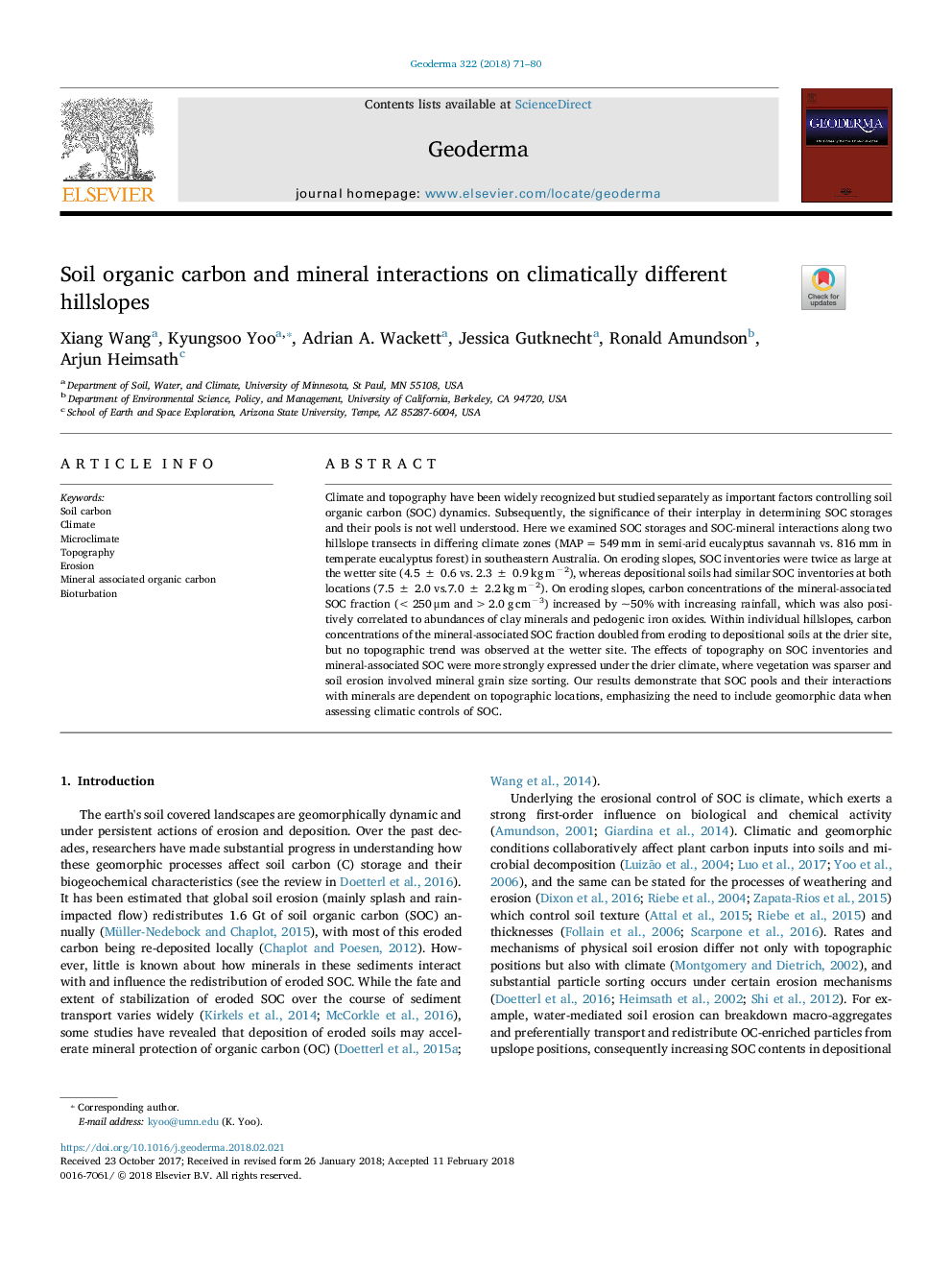ترجمه فارسی عنوان مقاله
تداخل کربن آلاینده خاک و متابولیسم مواد معدنی در کلبه های تپه های مختلف اقلیمی
عنوان انگلیسی
Soil organic carbon and mineral interactions on climatically different hillslopes
| کد مقاله | سال انتشار | تعداد صفحات مقاله انگلیسی |
|---|---|---|
| 88763 | 2018 | 10 صفحه PDF |
منبع

Publisher : Elsevier - Science Direct (الزویر - ساینس دایرکت)
Journal : Geoderma, Volume 322, 15 July 2018, Pages 71-80
ترجمه کلمات کلیدی
کربن خاک، آب و هوا، میکرو کلم توپوگرافی، فرسایش، مواد معدنی مرتبط با کربن آلاینده، بیوتروبیک،
کلمات کلیدی انگلیسی
Soil carbon; Climate; Microclimate; Topography; Erosion; Mineral associated organic carbon; Bioturbation;

